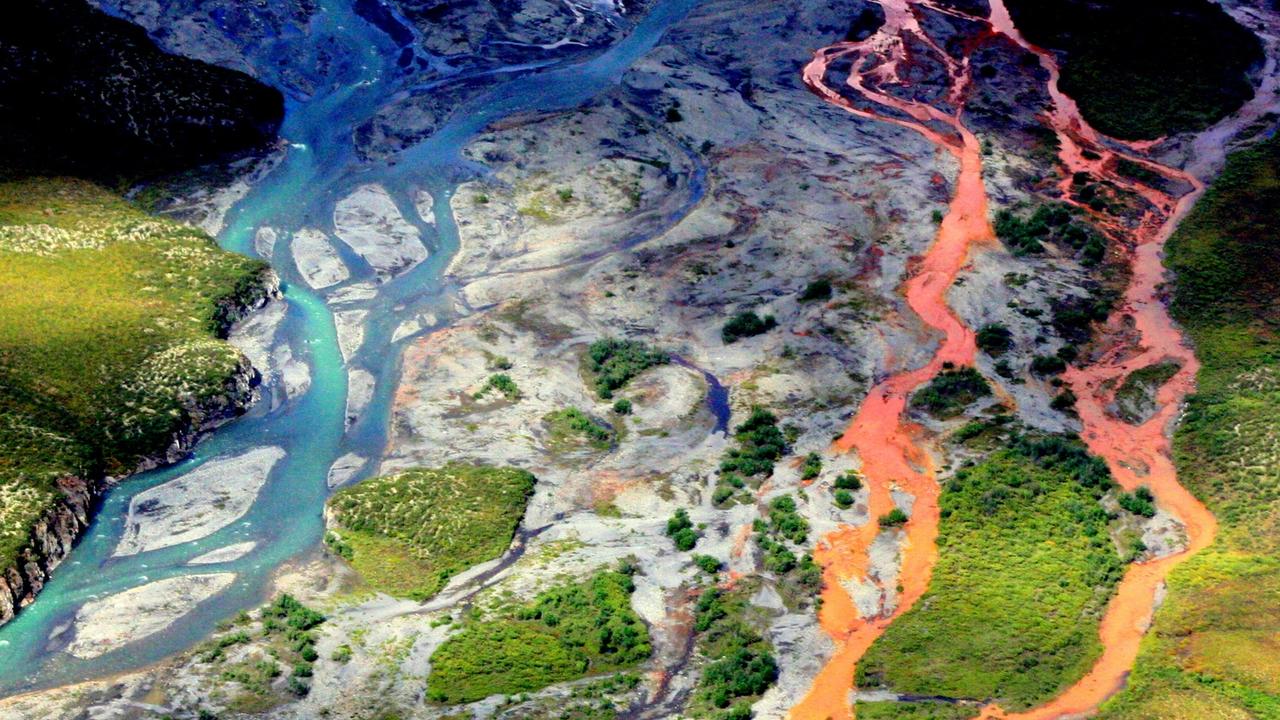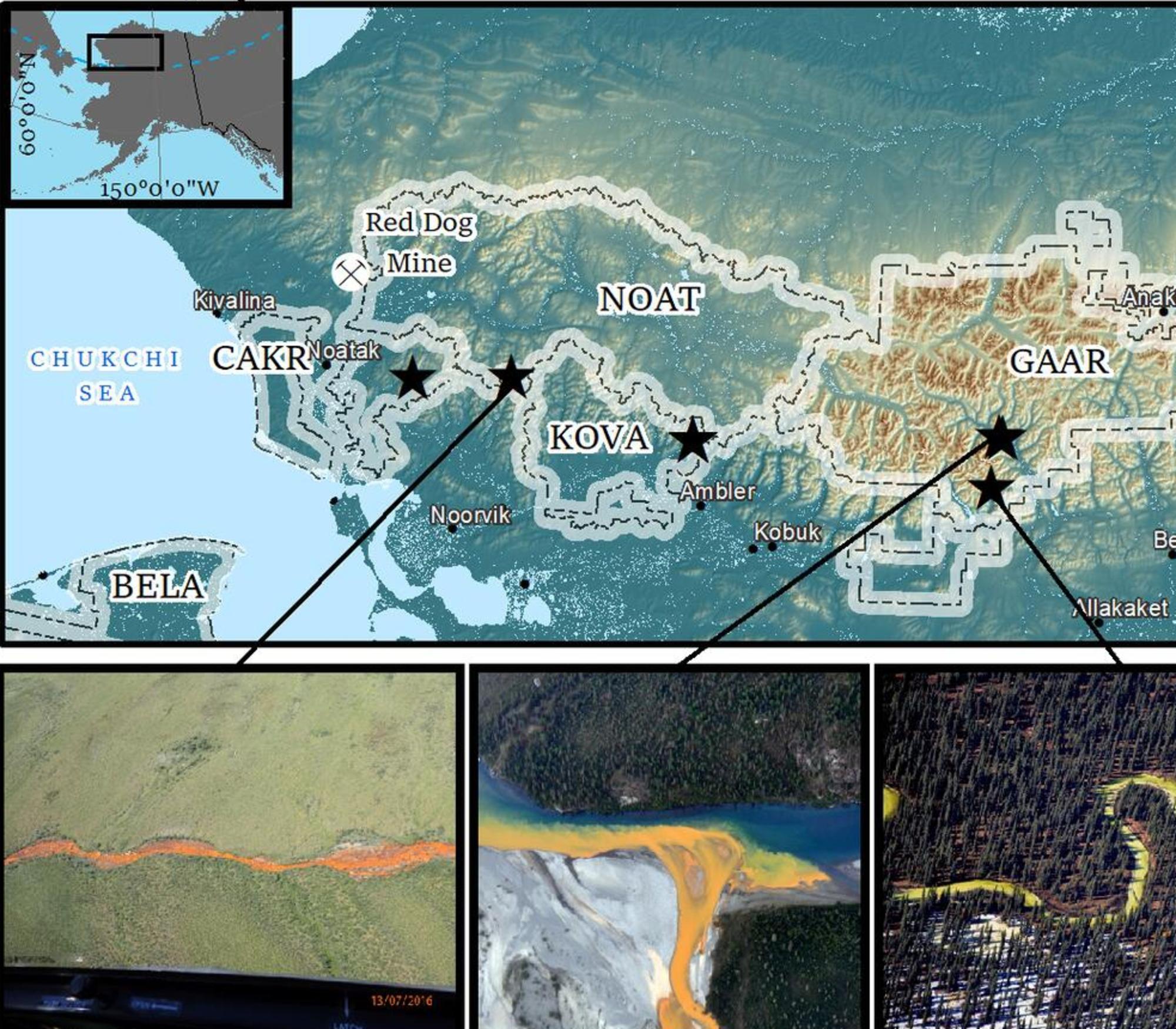‘We can see them from space’: Arctic rivers turn orange due to thawing permafrost
Some of the most beautiful, crystal-blue waterways in the world now resemble a ‘milky orange juice’ — and a new study suggests there is cause for concern

READING LEVEL: GREEN
Crystal-blue inland waterways have turned into ‘milky orange juice’ in a remarkable event which is worrying scientists.
Remote rivers and streams in northern Alaska’s Brooks Range are dramatically changing colour because of minerals* exposed by thawing* permafrost* — the permanently frozen ground found around the north and south pole.
The colour change has been recorded in a new study published in Nature Communications: Earth and Environment.
A team of researchers from the National Park Service, US Geological Survey, University of California, Davis, and other institutions* have sampled and studied the murky* waters.
They have identified 75 locations affected by the orange colour across an area about the size of NSW.

Researchers are worried it could affect drinking water and the number of fish as the climate continues to change.
“The more we flew around, we started noticing more and more orange rivers and streams,” said lead author Jon O’Donnell, an ecologist* with the National Park Service’s Arctic Inventory* and Monitoring Network.
“There are certain sites that look almost like a milky orange juice. Those orange streams can be problematic both in terms of being toxic* but might also prevent migration* of fish to spawning* areas,” he said.
Mr O’Donnell first noticed the issue in 2018 when he spotted a river that appeared rusty*, which had been clear the previous year. From then, he started noting locations and gathering water samples in the remote region, where helicopters are often the only way in.
Brett Poulin, an assistant professor of environmental toxicology* at University of California, Davis, and a lead investigator in the research, said one thing explained the size of the problem.
“The stained rivers are so big we can see them from space,” he said.

Professor Poulin said the colour is similar to what is usually seen with acid mine drainage despite there being no mines in the area.
One theory is that thawing permafrost is exposing rocks or parts of Earth’s crust that include metal to water and oxygen, resulting in an acid and metal release.
“One of the most dominant* metals is iron. That’s what’s causing the colour change,” researcher Taylor Evinge said.
POLL
GLOSSARY
- minerals: solid, naturally occurring substance (not from an animal or plant)
- thawing: melting
- permafrost: any ground that remains completely frozen for at least two years straight
- institutions: an organisation set up for a specific purpose
- murky: dim or hard to see through
- ecologist: an expert who studies the relationships between living things and their surroundings, or environment.
- inventory: a complete list of things
- toxic: poisonous
- migration: to move between one place and another
- spawning: process of how certain aquatic animals make babies
- rusty: when iron or steel forms a reddish-brown substance on its surface as a result of reacting with air and water
- toxicology: the study of the effects of chemical, biological, and physical agents on living organisms, particularly humans
- dominant: most powerful; ruling or controlling
EXTRA READING
Mystery of the deepest blue hole
What is cold lava?
Billionaire plans new Titanic sub
QUICK QUIZ
1. What metal is believed to be causing the blue water to turn orange?
2. Explain what permafrost is.
3. What do researchers fear could be harmed by the orange water? How could they be harmed?
4. What observation has emphasised the size of the problem?
5. How many locations are affected?
LISTEN TO THIS STORY
CLASSROOM ACTIVITIES
1. Beauty and Truth
Complete the thinking routine below comparing the beauty of these Arctic waterways versus the scientific truth.
- Can you find beauty in this story?
Can you find truth in this story?
How might beauty reveal truth?
How might beauty conceal truth?
Time: allow 20 minutes to complete this activity
Curriculum Links: English, Science, Personal and social, Critical and creative thinking.
2. Extension
If iron is being released into these waterways, what are the flow-on effects?
Who will this affect and how?
Time: allow 10 minutes to complete this activity
Curriculum Links: English, Science, Critical and creative thinking.
VCOP ACTIVITY
1. Colourful Changes in Alaska’s Rivers
Objective: To demonstrate understanding of the article by matching vocabulary words with their meanings and creating a simple story about the event.
Vocabulary Matching Game
Prepare pairs of flashcards using the glossary vocabulary terms on one set of cards (yellow) and their definitions on another set (white).
Mix the cards up and have the students match the vocabulary words with their correct definitions.
Discussion
Once the matching is complete, discuss the meanings of each word as a class to ensure everyone understands them.
Ask students to pair up and play wow word detective to provide examples of how the article uses these words.
Creative Story Writing:
Ask each student to write a short story or a few sentences using at least three of the vocabulary words. The story should include facts they learned about the remarkable event in Alaska, but it can be in another unique or fantasy location if they like. Their goal is to incorporate scientific facts from the article into their own made-up story to make it more realistic. Encourage them to be creative and include how the scientists discovered the change and what might happen next.


